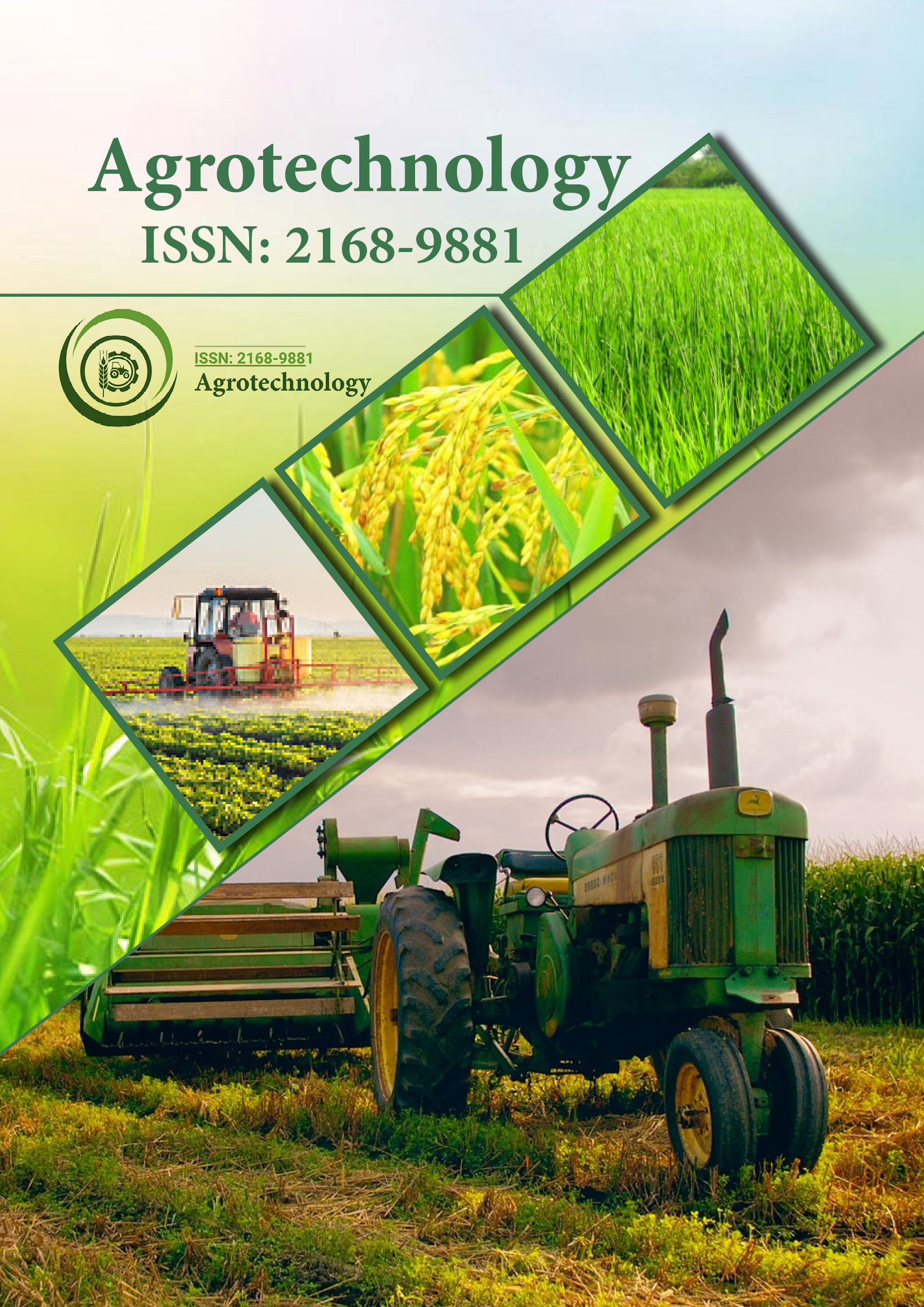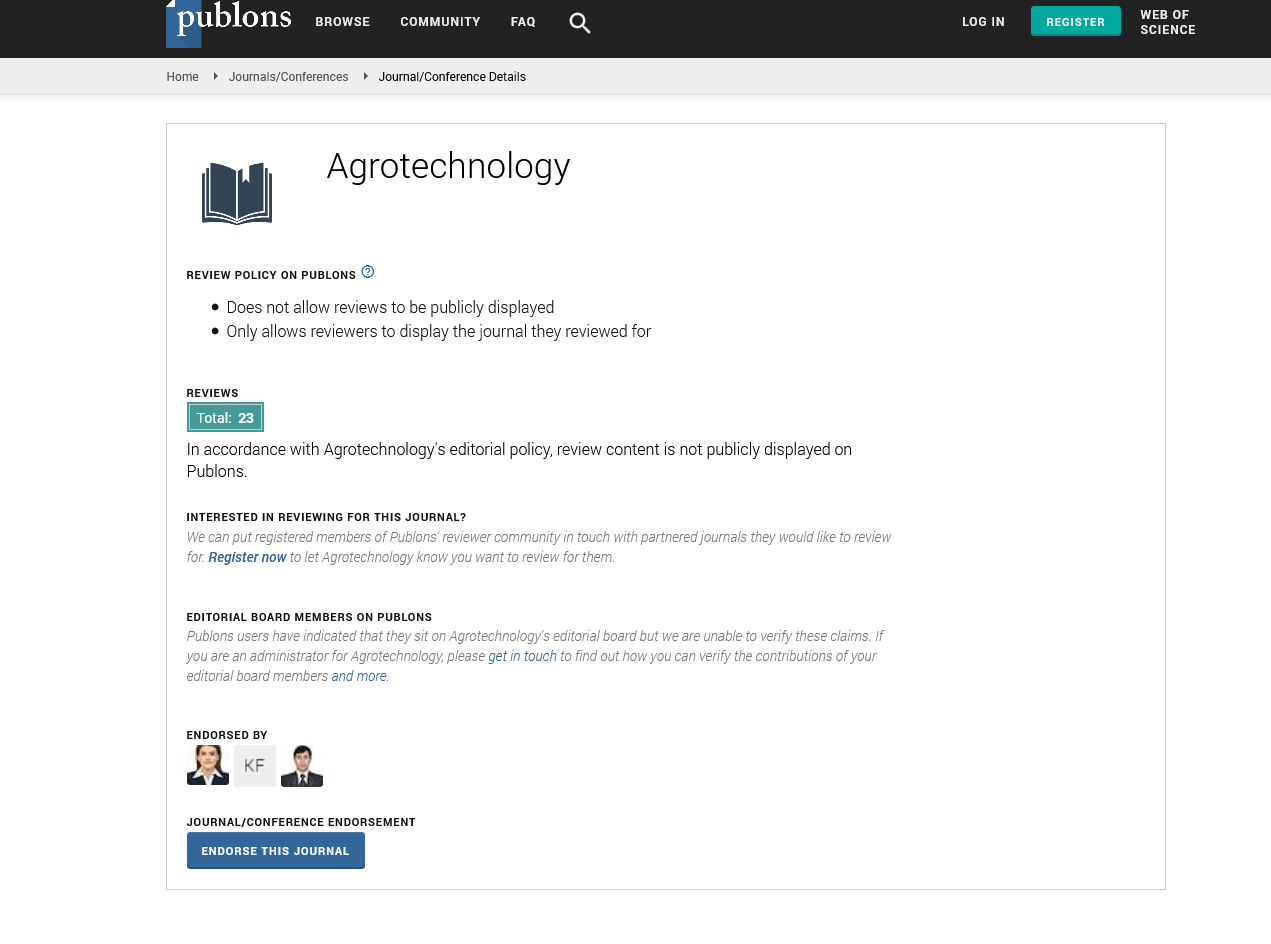Indexed In
- Open J Gate
- Genamics JournalSeek
- Academic Keys
- ResearchBible
- Cosmos IF
- Access to Global Online Research in Agriculture (AGORA)
- Electronic Journals Library
- RefSeek
- Directory of Research Journal Indexing (DRJI)
- Hamdard University
- EBSCO A-Z
- OCLC- WorldCat
- Scholarsteer
- SWB online catalog
- Virtual Library of Biology (vifabio)
- Publons
- Geneva Foundation for Medical Education and Research
- Euro Pub
- Google Scholar
Useful Links
Share This Page
Journal Flyer

Open Access Journals
- Agri and Aquaculture
- Biochemistry
- Bioinformatics & Systems Biology
- Business & Management
- Chemistry
- Clinical Sciences
- Engineering
- Food & Nutrition
- General Science
- Genetics & Molecular Biology
- Immunology & Microbiology
- Medical Sciences
- Neuroscience & Psychology
- Nursing & Health Care
- Pharmaceutical Sciences
Perspective - (2024) Volume 13, Issue 4
Crop Biodiversity: Protecting Genetic Resources for Future Food Production
Luca Antonio*Received: 29-Nov-2024, Manuscript No. AGT-24-27398; Editor assigned: 02-Dec-2024, Pre QC No. AGT-24-27398 (PQ); Reviewed: 16-Dec-2024, QC No. AGT-24-27398; Revised: 23-Dec-2024, Manuscript No. AGT-24-27398 (R); Published: 30-Dec-2024, DOI: 10.35248/2168-9891.24.13.389
Description
Crop biodiversity is essential for preserving genetic resources needed for future food production. This diversity includes both the variety of species and the genetic differences within those species, which serve as the basis for effective agricultural systems. As the world's population grows, so does the need for food, putting great pressure on agricultural techniques. Farmers and agricultural scientists can assure food security by maintaining and advancing crop biodiversity while reducing the risks given by environmental changes, pests and diseases.
One of the most significant advantages of crop biodiversity is its capacity to increase resistance to adverse conditions. Crop varieties have distinct characteristics that allow them to develop successfully in different temperatures, soil types and insect issues. Some rice varieties, for example, are more resistant to flooding, whereas others can withstand drought conditions. Farmers may provide protection against unexpected consequences of climate change by producing a varied range of crops, ensuring that at least some of their crops can survive in changing conditions. The ability to change is essential for sustaining agricultural productivity in an atmosphere of environmental changes.
Genetic diversity within crop species is also significant for disease resistance. Monoculture practices, which involve growing a single crop type over large regions, make agricultural systems more susceptible to pests and diseases. When a single variety is sensitive to a specific situation, a spread may affect entire fields, resulting in huge economic losses and food scarcity. Whereas, varied cropping systems with a variety of genetic features can successfully prevent disease spread. If a pest or disease impacts one variety, others with distinct genetic histories may be unaffected, sustaining overall productivity and stability in food production.
Crop biodiversity enhances both resistance and ecosystem health. Diverse agricultural settings maintain an extensive diversity of useful things, including pollinators, natural pest predators and soil microbes. These organisms help to maintain soil fertility, pollinate crops and naturally control pests. For example, a varied plant community attracts a variety of pollinators, which are required for the reproduction of many fruit and vegetable crops. Farmers can cultivate a variety of crops to create an environment which helps these creatures, resulting in healthier farms and more sustainable production systems.
Crop biodiversity preserves genetic resources for future generations. Traditional agricultural practices frequently depend on a small number of crop varieties, which can contribute to genetic loss. As farmers choose high-yielding cultivars that control the agricultural sector, crop genetic diversity may decrease, limiting future breeding opportunities. This loss of genetic diversity reduces the ability to respond to new challenges such as new pests, illnesses and climate change. By preserving various crop types, agricultural systems can stay adaptable and responsive to unexpected challenges, ensuring that future generations have access to a wide range of genetic resources.
Crop biodiversity conservation efforts use both classic and nontraditional strategies. Traditional conservation involves keeping crop types in their natural or cultivated environments, where they can evolve and adapt in time. This technique allows farmers to grow and share a variety of crops, which improves social stability and food control. Alternative conservation, on the other hand, involves preserving seeds and genetic material in gene banks to ensure their future use. These gene banks store genetic diversity, allowing researchers and producers to access significant genetic features for crop enhancement. Together, these conservation strategies provide a layer of protection for genetic resources, protecting them from the challenges posed by climate change and industrial agriculture.
Communication among farmers, researchers and officials is essential for increasing the diversity of crops. Education and awareness programs can help farmers recognize the importance of varied agricultural systems and traditional varieties. Sharing information on agroecological practices can also increase the use of biodiversity-friendly farming methods. Furthermore, regulations involving the conservation and sustainable use of genetic resources could help farmers to maintain varied crop systems. Such associations help in developing a common approach to biodiversity conservation, providing that it remains an essential objective in agricultural practices.
Crop biodiversity provides significant economic benefits that should not be ignored. Diverse agricultural systems can result in higher production and better quality since diverse crops give complementing benefits. For example, planting legumes in addition to grains can improve soil fertility through nitrogen fixation, lowering the demand for synthetic fertilizers. This combined method not only reduces production costs but also enhances agricultural sustainability. Additionally, crop diversity can create new market opportunities as consumers search for unique and regionally sourced goods. Farmers who embrace biodiversity can benefit from these developments, increasing their income while supporting sustainable practices.
In conclusion, crop biodiversity is essential for preserving genetic resources required for future food supply. Crop biodiversity provides a structure for sustainable agriculture by increasing sensitivity to environmental challenges, improving health of ecosystems and protecting genetic diversity. Farmers, researchers and governments must work together to preserve this diversity and ensure that future generations have access to the extensive genetic resources required to meet the changing demands of food production. To emphasise crop biodiversity not only helps to ensure the availability of food, but also develops a more sustainable and stable agricultural environment in the future.
Citation: Antonio L (2024). Crop Biodiversity: Protecting Genetic Resources for Future Food Production. Agrotechnology. 13:389.
Copyright: © 2024 Antonio L. This is an open access article distributed under the terms of the Creative Commons Attribution License, which permits unrestricted use, distribution, and reproduction in any medium, provided the original author and source are credited.


